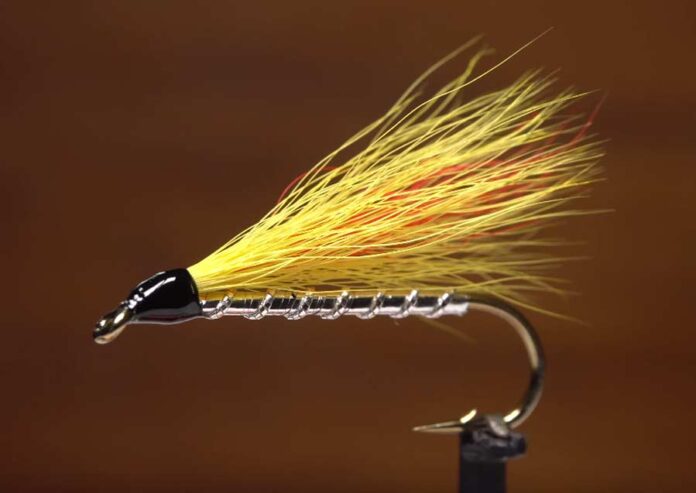The story of how the Mickey Finn got its name comes in several versions, but no one disputes that the pattern known first as the “Red and Yellow Bucktail” was popularized by famed angler and author John Alden Knight in the 1930s. Apparently, Knight introduced the fly to a columnist from the Toronto Star, Gregory Clark, who re-dubbed the fly not once, but twice. First, he called it the Assassin because it was so deadly on brook trout. Upon learning that movie star Rudolph Valentino had supposedly been killed by a drug slipped into his drink–a.k.a. a “Mickey Finn”–Clark decided that that was the perfect name for the bucktail. (You can read the whole story here.)

Anyone who grew up in New England , as I did, learned to love the Mickey Finn for its simplicity and its effectiveness on everything from brookies to panfish. In larger sizes, it’s a killer bass and pickerel pattern, too.
In today’s video, Tim Flagler of Tightline Productions walks you through the process for tying this elegant classic. The key is to produce a slim fly with a sparse wing, which means you want to tie in and layer all the materials carefully. The way Tim controls the thread width is ingenious and will keep you from producing a lumpy streamer.
Mickey Finn
Hook: 4X-strong streamer hook (here, a Dai-Riki #700), sizes 4 to 14.
Thread: Black, 8/0 or 70-denier.
Rib: Silver oval tinsel, medium.
Body: Gold/Silver Mylar tinsel, medium.
Adhesive #1: Superglue or Z-Ment.
Lower wing: Yellow bucktail, cleaned and stacked.
Mid wing: Red bucktail, cleaned and stacked.
Upper wing: Yellow bucktail, cleaned and stacked.
Head: Tying thread.
Adhesive #2: UV-cure resin.
Credit: Source link































